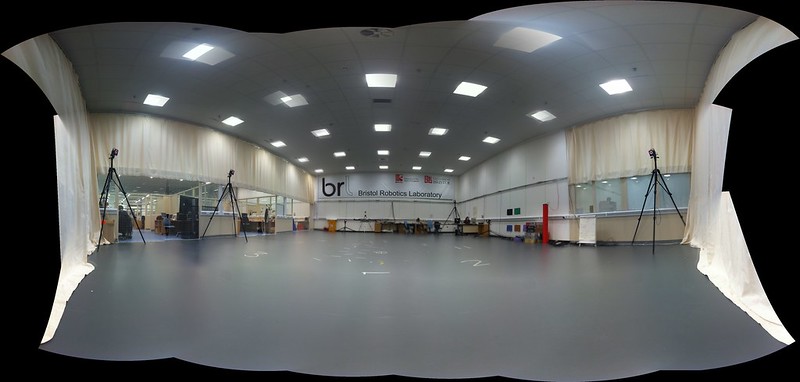This work was carried out in our indoor flying arena. (Much of the purpose of this post is to provide an excuse to post the photo of this arena below.) This is an empty space 15m x 12m x 4m high, enclosed by curtains and instrumented with a Vicon motion capture system, now up to ten cameras. We don't currently build our own aircraft - we just buy them off the shelf, so we can concentrate on developing the controllers for them. The end goal is to make micro air vehicles (MAVs) that are more autonomous, able to say fly into a damaged building, explore and then come back out, without needing a highly skilled pilot to fly it and keep track of where it is.

One way you can get involved in research like this is our joint Robotics MSc, run by the University of Bristol and the University of the West of England. The degree is based at the Bristol Robotics Lab and includes the opportunity to do research projects using our flying robots. More details can be found at http://www.bristol.ac.uk/
No comments:
Post a Comment